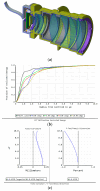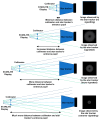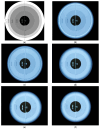MINISTAR to STARLITE: Evolution of a Miniaturized Prototype for Testing Attitude Sensors
- PMID: 40942790
- PMCID: PMC12431149
- DOI: 10.3390/s25175360
MINISTAR to STARLITE: Evolution of a Miniaturized Prototype for Testing Attitude Sensors
Abstract
Star trackers are critical electro-optical devices used for satellite attitude determination, typically tested using Optical Ground Support Equipment (OGSE). Within the POR FESR 2014-2020 program (funded by Regione Toscana), we developed MINISTAR, a compact electro-optical prototype designed to generate synthetic star fields in apparent motion for realistic ground-based testing of star trackers. MINISTAR supports simultaneous testing of up to three units, assessing optical, electronic, and on-board software performance. Its reduced size and weight allow for direct integration on the satellite platform, enabling testing in assembled configurations. The system can simulate bright celestial bodies (Sun, Earth, Moon), user-defined objects, and disturbances such as cosmic rays and stray light. Radiometric and geometric calibrations were successfully validated in laboratory conditions. Under the PR FESR TOSCANA 2021-2027 initiative (also funded by Regione Toscana), the concept was further developed into STARLITE (STAR tracker LIght Test Equipment), a next-generation OGSE with a higher Technology Readiness Level (TRL). Based largely on commercial off-the-shelf (COTS) components, STARLITE targets commercial maturity and enhanced functionality, meeting the increasing demand for compact, high-fidelity OGSE systems for pre-launch verification of attitude sensors. This paper describes the working principles of a generic system, as well as its main characteristics and the early advancements enabling the transition from the initial MINISTAR prototype to the next-generation STARLITE system.
Keywords: Optical Ground Support Equipment (OGSE); optical stimulator; star field simulation; star tracker.
Conflict of interest statement
Authors Cristian Baccani, Vasco Milli and Jacopo Pini were employed by the company GESTIONE SILO S.R.L. Authors Massimo Ceccherini, Massimo Cecchi and Fabrizio Manna were employed by the company PROMEL COSTRUZIONI S.R.L. Authors Francesco Focardi, Enrico Franci and Lorenzo Salvadori were employed by the company SAITEC S.R.L. The remaining authors declare that the research was conducted in the absence of any commercial or financial relationships that could be construed as a potential conflict of interest.
Figures














References
-
- Liebe C.C. Star Trackers for Attitude Determination. IEEE Aerosp. Electron. Syst. Mag. 1995;10:10–16. doi: 10.1109/62.387971. - DOI
-
- Bar-Itzhack I.Y. New Method for Extracting the Quaternion from a Rotation Matrix. J. Guid. Control Dyn. 2000;23:1085–1087. doi: 10.2514/2.4654. - DOI
-
- Park J.-O., Choi J.-Y., Lim S.-B., Kwon J.-W., Youn Y.-S., Chun Y.-S., Lee S.-S. Electrical Ground Support Equipment (EGSE) Design for Small Satellite. J. Astron. Space Sci. 2002;19:215–224. doi: 10.5140/JASS.2002.19.3.215. - DOI
-
- Dynamic Optical Ground Support Equipment. [(accessed on 26 June 2025)]. Available online: https://www.terma.com/media/gzrbpee2/terma_dogse_data_sheet.pdf.
-
- Samaan M., Steffes S., Theil S. Star Tracker Real-Time Hardware in the Loop Testing Using Optical Star Simulator; Proceedings of the Space Flight Meeting; New Orleans, LA, USA. 13–17 February 2011.
Grants and funding
LinkOut - more resources
Full Text Sources
Research Materials

